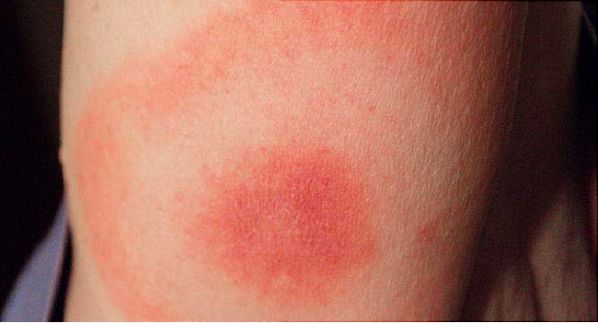
Lyme disease can be diagnosed by 'bull's eye' rash alone
Lyme disease can be diagnosed by the rash alone, new advice for the NHS says.
People with the "bull's eye" circular rash do not need a blood test and should be treated immediately to avoid complications, the National Institute for Health and Care Excellence says.
Waiting for lab results is unnecessary and can cause delays in patients being prescribed the antibiotics they need.
Lyme disease is spread by tick bites and can be debilitating.
A blood tests can check for it but may not give a positive result until eight weeks after the patient is bitten.
Prof Gillian Leng, deputy chief executive and director of health and social care at the National Institute for Health and Care Excellence (NICE), said for most people with Lyme disease, a course of antibiotics would be an effective treatment, "so it is important we diagnose and treat people as soon as possible".
"A person with Lyme disease may present with a wide range of symptoms, so we have clear advice for professionals about the use of lab tests for diagnosis and the most appropriate antibiotic treatments," she said.
"If a characteristic bull's eye rash is present, healthcare professionals should feel confident in diagnosing Lyme disease."
Lyme disease can be difficult to diagnose. It has similar symptoms to other conditions and there is not always an obvious rash.
Symptoms can include:
A high temperature or feeling hot and shivery,headaches, muscle and joint pain, tiredness,loss of energy.
But if there is a delay in treatment, more severe symptoms can develop months or years later, including:
Pain and swelling in joints,nerve problems - such as pain or numbness,heart problems,loss of memory or concentration.